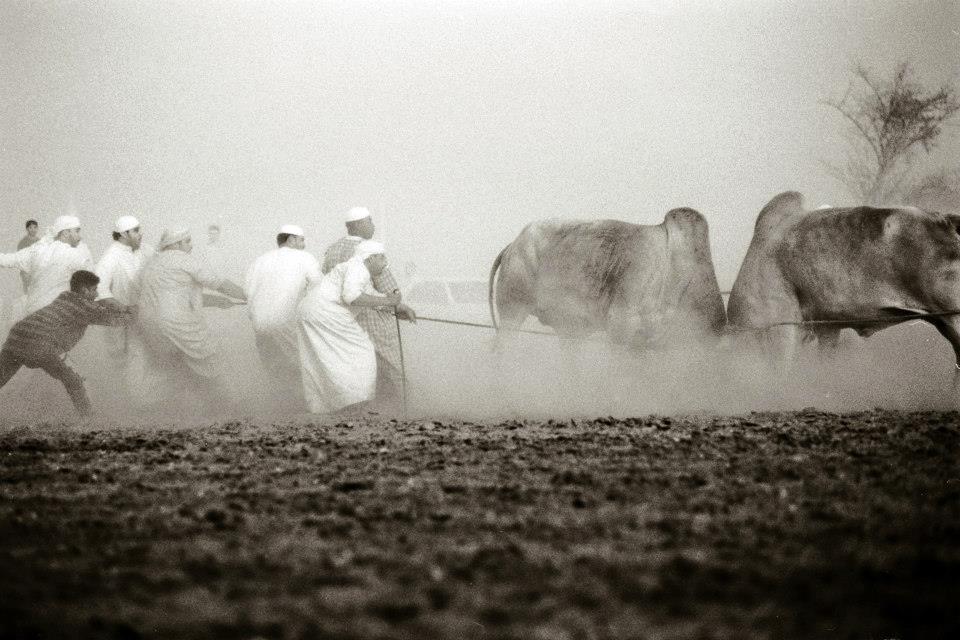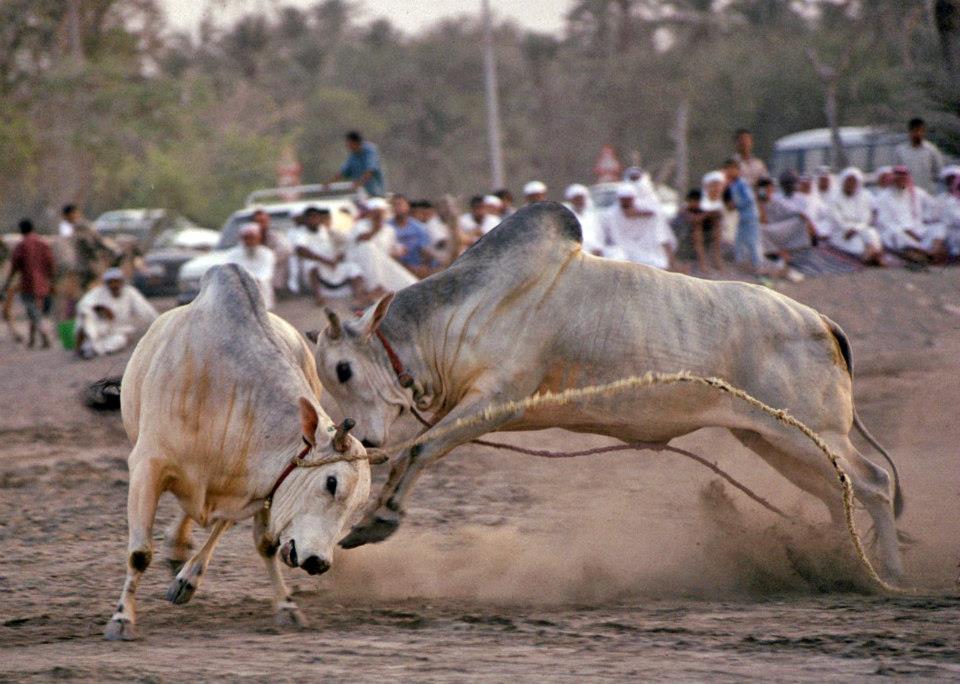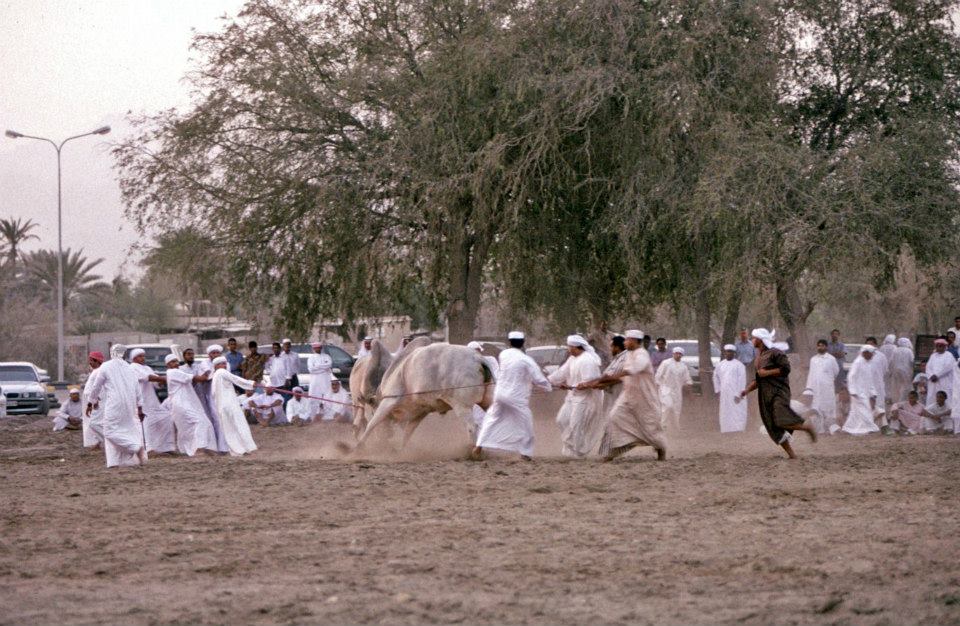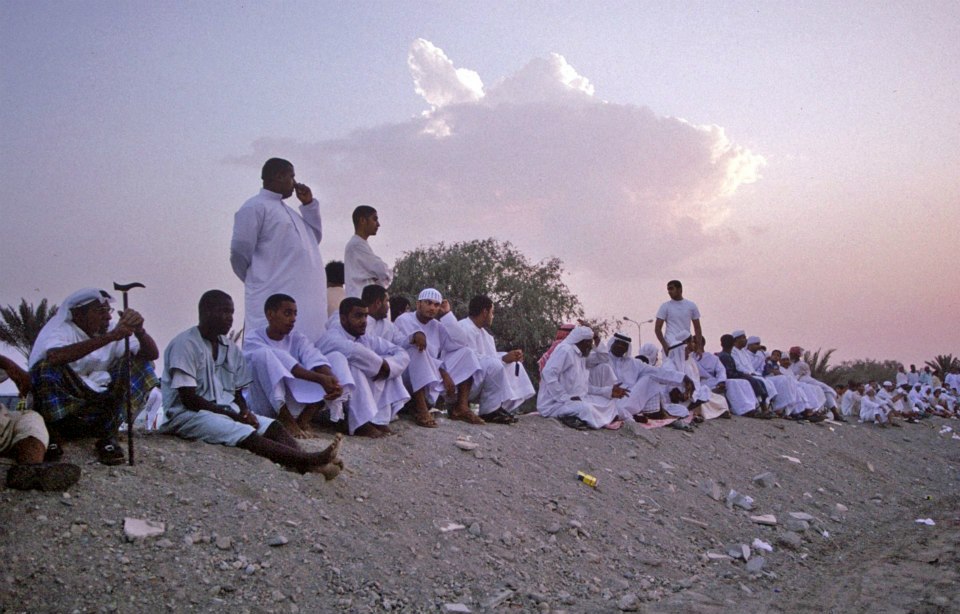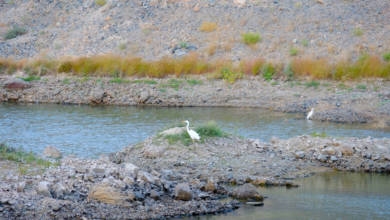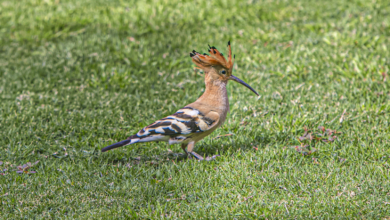*Photographs taken by Patrick Foley
There are no matadors or picadors, but bulls locking horns with each other draw big crowds to bullfights in the United Arab Emirates (UAE).
An hour’s drive from the dancing water fountains of Dubai’s glitzy downtown, hundreds of fans gather in the eastern emirate of Fujairah to watch bulls fighting, or perhaps more acurately head butting, with honour rather than money at stake.
Unlike the Spanish tradition which pits man against beast, the UAE sport involves two bulls locking horns in a three-to-four minute Sumo-wrestling-like fight that usually ends with no bloodshed.
“In the 20 years I’ve been watching bull fights, we’ve only had to put down two bulls,” said Hamad Bin Hamdan Al Matrooshi, who owns 15 bulls.
He said that the fight usually isn’t long enough for the animals to seriously harm one another – but the bull’s sharp horns can lead to cuts and injuries.
“Sometimes, they injure their heads and and get bloody from the fights,” said Fahad Mohammad, who owns six bulls. But the spectators are diligent when it comes to separating them should the fighting get too intense.
Excitement
The fights also can prove perilous to the spectators, with men and boys seated on plastic chairs in the ring itself always ready to spring to safety as the animals can easily smash into into their seats.
“It’s exciting for people to sit near the fight,” said 29 year-old Mohammad. “But once the bull’s blood gets hot, it’s hard to calm him down. They will just want to fight and it doesn’t matter against whom.”
Under the rules, the first animal to disengage and walk away is declared the loser. If neither backs away it is a draw and about a dozen men separate them, dragging them apart with ropes.
“In Spain it’s different, they kill (the bull),” said Al Matrooshi, 68, from the emirate of Ajman, who had six bulls fighting one Friday recently in Fujairah.
“Here, we do it for pride. If a bull runs away, then the other one is the winner.”
There is no cash prize for matches in Fujairah, where betting is not allowed under the emirate’s Islamic laws. But bulls are investments and their value increases the more they win.
“One man bought two bulls for one million dirhams (about $272,000),” Al Matrooshi said.
There is an active trade in bulls between Fujairah and neighbouring Oman, where the sport is even more popular with dozens of bull-fighting rings dotted throughout the country.
Mohammad said he made a 30,000-dirham profit from his black-and-white wall-eyed bull named Al Jamr, meaning “burning coal”. He bought it for 90,000 dirham and sold it for 120,000 dirham in Oman.
Free, family-friendly
With entertainment in the UAE leaning towards extravagance and conspicuous consumption, bull fighting in Fujairah provides a free and family-friendly weekend activity.
About 40 bulls are brought into the fenced Fujairah arena once a week. The more cautious spectators, including women and children, take seats in the rings or sit perched atop SUVs eating ice cream or chopped mangoes sold during the event.
The origin of the sport is contested. Some believe it to be an import from the Portuguese who captured parts of the Arabian Peninsula in the 16th century.
Others say it had existed in the area long before the Portuguese conquest.
Training bulls to fight starts early, when the animals are around six months old. They are brought to the bull ring between the ages of two and five.
The bulls are trained in the sea in order to increase their stamina and ensure they do not become easily tired. According to owners, the water training builds up their chest muscles.

